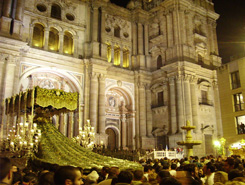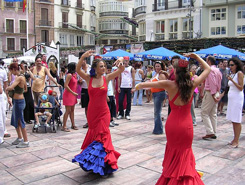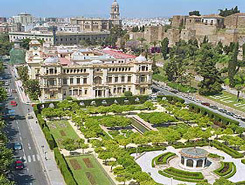Eine Gegend, reich an Geschichte, welche in Harmonie mit den heutigen Tradtionen existiert. Sport, Strand, Gastronomie und Spaß, sowie Kultur, Flamenco und traditionelle Feste sind Teil von Marbella und der Costa del Sol und machen diesen Ort einzigartig und unvergesslich.
Home to different populations thoughout history which have left their mark on Malaga. The main monuments come from Mount Gibralfaro and its surroundings. The castle which sits at the top of the mountain was built by the Arab population and gives a breath taking view over the bay. At the feet of Alcazaba, the palace and the Roman theatre, from the 1st century AC. In the successive period the Cristians built the Cathedral of Encarnation, known as the "La Manquita" for its lack of pillars. Together with the Cathedral you can find Episcopal Palace, famous for its Barroque façade, and Sagrario Church. Other examples of religious architecture include the churches of San Juan, the Martires, San Lazaro and Santiago.
From past epochs you can see Zea-Salvatierra Palace (17th century), the Marqués de la Sonora Palace, the Barroque house of the Atarazanas, the Valdeflores Palace, the Counsellor's house and the Villalcázar Palace (18th century).
Amongst the civil type buildings we can highlight those built towards the end of the 19th century and the beginning of the last century. These include the Almacenes Félix Sáenz, MAtarazanas and Salamanca Markets, Miramar Palace, Tinta Palace, the “Desfile del Amor” building, Tabacalera, and Colegio del Mapa (Mapa School) and the Junta de Obras del Puerto. From previous epochs we shouldn't fail to mention Marqués de la Sonora Palace, the Barroque house of Atarazanas, Valdeflores Palace, Casa del Consulado, Villalcázar Palace (18th century) and Zea-Salvatierra Palace (17th century). A more important example of arquitecture from the 16th century is the Buenavista Palace, a renaissance building which houses the Picasso Museum. Here you can see more than 200 works of Malagan art right from his academic works to more modern pieces from the 1970s. Also, inside the palace you can visit Phoenicians ruins found during the restoration of the palace.
A walk through Malaga park is a must: a sub tropical botanical garden 800 metres long paralel to the port. You can choose from three short walks with statues. Next to the park there are other historical parks: los Jardines de Puerta Oscura (the gardens of the Dark Port) and geometric Pedro Luis Alonso Gardens. Also, you'll find the Malaga University Gardens, the Botanical Gardens of Conception, Finca San José gardens, History of Retiro Gardens and the Historical Gardens of la Cónsula.
Malaga, as in the whole of Andalusia, the traditional festivals have significant importance. The patron saint of the city, the Virgen Carmen, is celebrated 16 July with two processions - one on land and one by sea - considered the protector of the marines.
Fireworks, flamenco and the horse procession characterise the August Fair (Feria de Agosto), the summer fair which takes place the second Friday of August until Sunday the following week. Another unmissable fair is the Easter week in Malaga, a tourism favourite internationally since 1965.
Another procession part of Malaga popular culture is El Verdial which comes from countryside culture. Its origin is unknown due to the lack of written documentation and historical references. The 'verdiales' is a song and dance which is similar to a Flamenco, but is different due to the instruments used (violin, guitar, cymbals, tambourine...) which come from Arab influences and, on the other hand, being a song made to dance to. The festival of the Verdiales takes place the 28 December.

